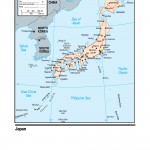The available facts about the power of the atomic bomb as a military weapon lie in the story of what it did at Hiroshima and Nagasaki. Many of these facts have been published, in official and unofficial form, but mingled with distortions or errors. The U.S. Strategic Bombing Survey, therefore, in partial fulfillment of the mission for which it was established, has put together in these pages a fairly full account of just what the atomic bombs did at Hiroshima and Nagasaki. Together with an explanation of how the bomb achieved these effects, this report states the extent and nature of the damage, the casualties, and the political repercussions from the two attacks. The basis is the observation, measurement, and analysis of the Survey’s investigators. The conjecture that is necessary for understanding of complex phenomena and for applying the findings to the problems of defense of the U.S. is clearly labeled.
Read more →

